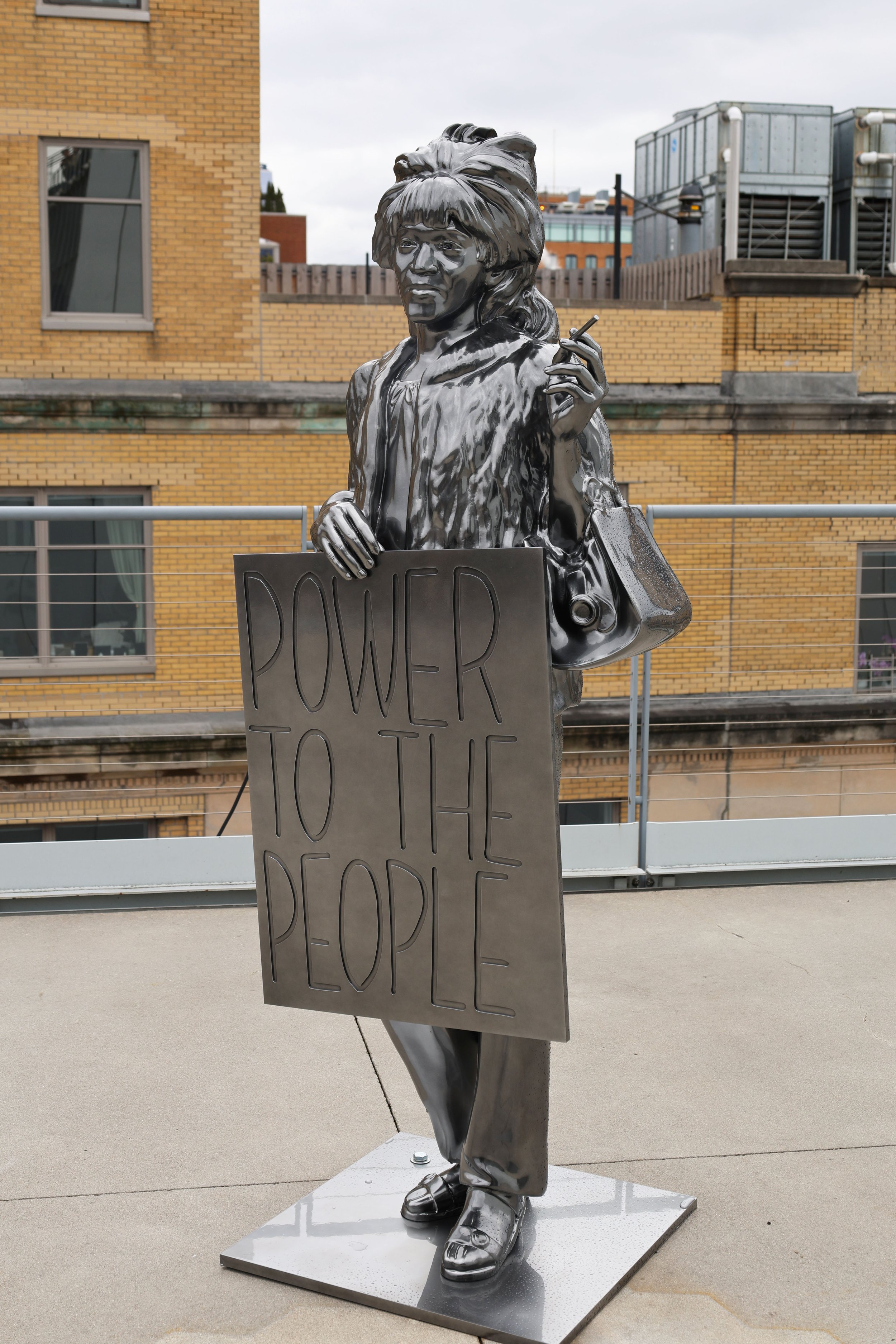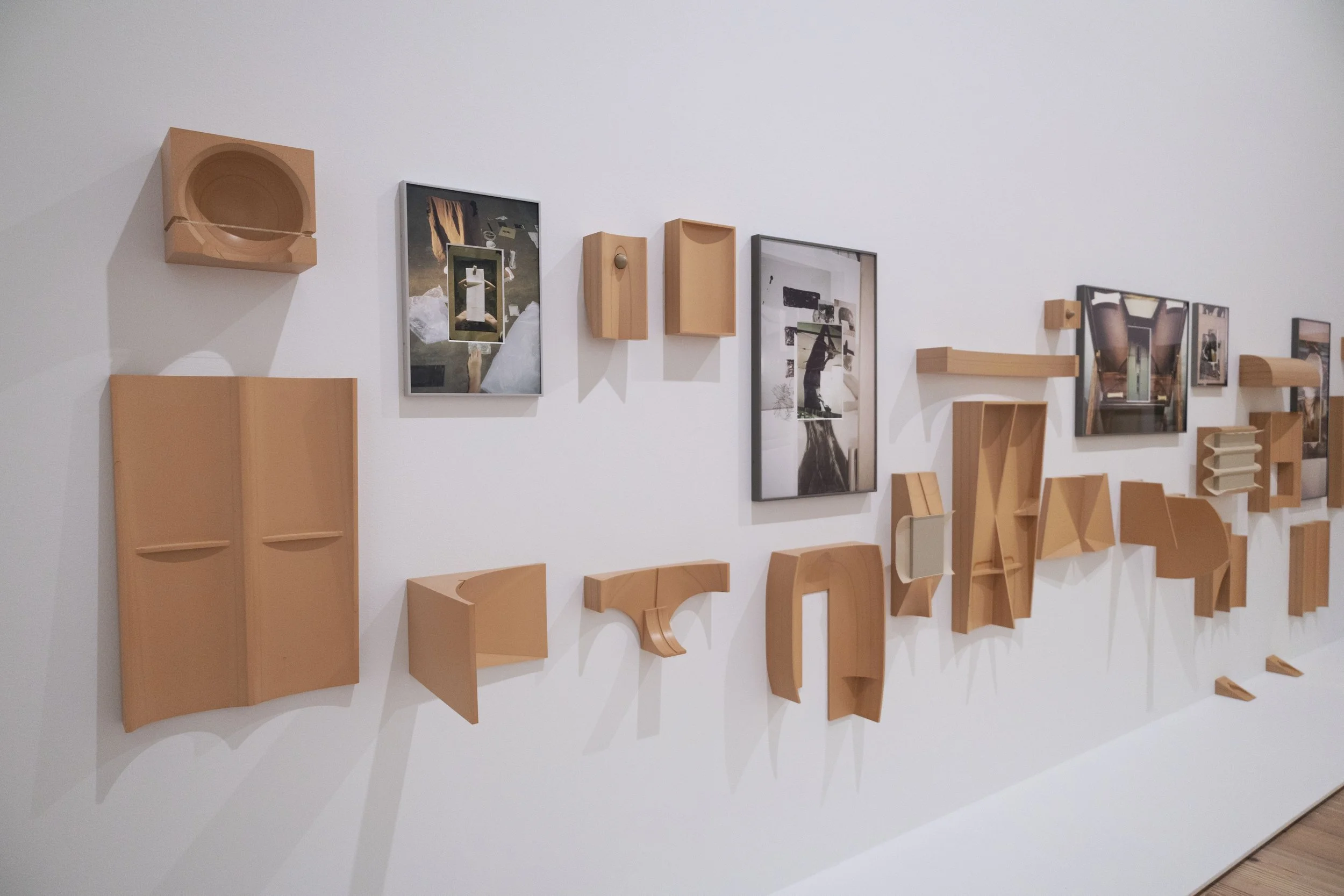Whitney Biennial 2024: Even Better than the Real Thing
Installation view of Whitney Biennial 2024: Even Better than the Real Thing (Whitney Museum of American Art, New York, March 20-August 11, 2024). Holly Herndon & Mat Dryhurst, xhairymutantx Embedding Study 1, 2024. Photograph by Audrey Wang
Written by Trip Avis
The eighty-first Biennial hosted by New York’s Whitney Museum is a major platform for artists across mediums who represent the marginalized, the cutting edge, and those in precarious situations concerning their fundamental human rights, and it has come just at the right time. The historic and culturally resonant event, which runs between March 20 and August 11, 2024, coincides with our fraught and ever-evolving cultural-political landscape and is at a turning point in how we collectively perceive and define art. What was once viewed as deeply, exclusively humanistic practice—perhaps the purest expression of our souls, its pleasures and torments—art is indelibly changed by the growing presence of artificial intelligence in the artistic world.
Equally potent is the Biennial’s focus on the dynamic between American government policies and the treatment of individuals who fail to align with oppressive notions of bodily self-determination and gender expression. Subtitled Even Better than the Real Thing, the Biennial co-organizers Chrissie Iles and Meg Onli and the artists displayed “[combat] rhetoric around “authenticity” that is used to perpetuate transphobia and restrict body autonomy in the United States.” Among the seventy-one artists and collectives proudly presented at this Biennial, visual artists, filmmakers, activists, and photographers like Carmen Winant, B. Ingrid Olson, and Tourmaline provide visitors with moving visual insights that bring this ethos to the forefront of the eyes, mind, and heart.
Carmen Winant, Women’s blueprint for survival I and II, 2022. Sun-bleached construction paper, painter’s tape, inkjet prints, two works of 47 1/2 x 36in. each (120.7 x 91.4 cm). © Carmen Winant. Courtesy of the artist and PATRON Gallery, Chicago. Photograph by Jamie Alvarez
Carmen Winant's installation is one of the Biennial's most engrossing—visually and in terms of physical space. The 2,700 printed images that compose Winant’s 2023 project, The last safe abortion, consume the spacious white wall of the gallery, just as the alarming overturn of Roe v. Wade in 2022 sapped the stability and security of bodily freedom for many in the United States. While creating her immense photographic project—a sort of visual poetry that is equal parts reverent, solemn, and informative—the artist drew from the archives of hospitals and clinics across the Midwest and South United States and used images from fifty years to portray the daily minutiae and experiences of staff, volunteers and other individuals who played (and still play) a part in ensuring the safety and comfort of legal abortion processes.
Even more so, Winant shows viewers the flesh-and-blood people whose rights are being encroached upon. Through her precise arrangements, Winant seeks to convey a sort of narrative cohesion—“a tapestry with warp and weft,” as she eloquently puts it—that draws the eye from the overwhelming mass of color and humanity. One eye-catching swath of imagery bears the words: “What’s the worst thing about using condoms?” in block-white letters, framed by images of two clinic employees stationed before a computer. One can sense the journey between the two images. The man below is perched in front of a chunky desktop monitor that betrays the image’s age as much as the sepia tone. The woman above is using a slimmer, contemporary model. The bright glow of the screen and the lavender wall above feel brisk and current, as if the image had been snapped the day before. Despite the seeming banality of the task, it reveals something greater and profound: the long, unbroken line of effort on behalf of patients across the country.
B. Ingrid Olson, Completed Movement (between abut and rub between two notes the number between one and two divided into qualities and kinds), 2016-22. Inkjet print and UV printed matboard in powder-coated aluminum frame. Collection of Dan Byers. © B. Ingrid Olson. Photograph by Robert Chase Heishan
B. Ingrid Olson tackles the body and its complexities more abstractly. Her project, Dura Pictures, is provocative and complex in its composition, trapping you in a funhouse mirror vertigo as you attempt to parse together disparate human appendages into a cohesive body. This effort verges on pareidolia, the construction of patterns by the brain that is a distinctly human trait. It allows viewers to perceive the human body—the artist’s—in curious new ways.
To create this visually refracting effect, Olson physically overlays different images to portray a “moment in time within a different moment in time, just like a memory does of the past in the present.” In one image, Olson photographs her nylon-clad thighs from below, refracted in what appears to be a mirror held between weathered wood beams. Embedded between her legs is a photograph of a staplegun, which continues the imagery's hardware motif but makes a bold and perhaps sensuous statement. In another, she tilts the camera steeply downward along the side of her bare leg, a sharply angled visual that requires the eye a moment to adjust its perspective.
Installation view of Whitney Biennial 2024: Even Better than the Real Thing (Whitney Museum of American Art, New York, March 20-August 11, 2024). Kiyan Williams, Statue of Freedom (Marsha P. Johnson), 2024. Photograph by Audrey Wang
Life's one definite promise is that it goes on in one way or another; energy is neither created nor destroyed. Artist, filmmaker, and activist Tourmaline explores this fluid continuance of existence in her 2022 short film Pollinator, musing “that the truth of life is its ongoingness, its essence unchanged and unconstrained by space, time, or physical form.” Channeling the ethereal, floral aesthetic of famed Black trans activist Marsha P. Johnson, the filmmaker wanders in a garden and bubbling brook in a flowered headdress, softly communing with the nature around her. Interspersed with this tranquil scene are shots from Johnson’s funeral, which lends a somber element to the film. While Tourmaline in the garden represents the living and the present, Johnson represents the living and the past.
Tourmaline, still from Pollinator, 2022. Video, black and white, sound; 5:08 min. © Tourmaline. Courtesy the artists and Chapter, New York
The project explores the artist’s understanding of loss and grief; she “[...] experiences loss, past, present, and future—with immediacy, as though those who came before us and are now gone are as yet more alive now than they have ever been.” One particular frame from Pollinator that strikes directly at the heart is the altar shot at Johnson’s memorial service. The altar is draped with an LGBTQIA flag. Beneath the candles and gilded crucifix—symbols of a Church that has long had a tumultuous relationship with the queer community—are floral arrangements, bright, large sunflowers, and photographs of Johnson. The funeralgoers sing “Swing Low, Sweet Chariot,” a notable African-American hymnal, to honor the lost flower in their lives—and in the lives of so many queer people then, now, and to come.
Installation view of Whitney Biennial 2024: Even Better than the Real Thing (Whitney Museum of American Art, New York, March 20-August 11, 2024). Carmen Winant, The last safe abortion, 2023. Photograph by Filip Wolak
Even Better than the Real Thing reminds us that humans are all real, authentic, beautiful, and flawed beings. We can profoundly outpour our souls, which we deem art; we can also dream up and design machines that can create art. Despite the political and cultural forces that seek to drive us further apart, art and celebrating the self and the whole of humanity is far more binding and powerful.
Installation view of Whitney Biennial 2024: Even Better than the Real Thing (Whitney Museum of American Art, New York, March 20-August 11, 2024). B. Ingrid Olson, Photo Coda, Index, 2016-22; Calendar, 2020-21; B. Ingrid Olson, !i!, 2021-22; B. Ingrid Olson, Never odd or even (perhaps the bone I think I am biting is my own tail), 2013-20; B. Ingrid Olson, Completed Movement (between abut and rub between two notes the number between one and two divided into qualities and kinds), 2016-22. Photograph by Audrey Wang













